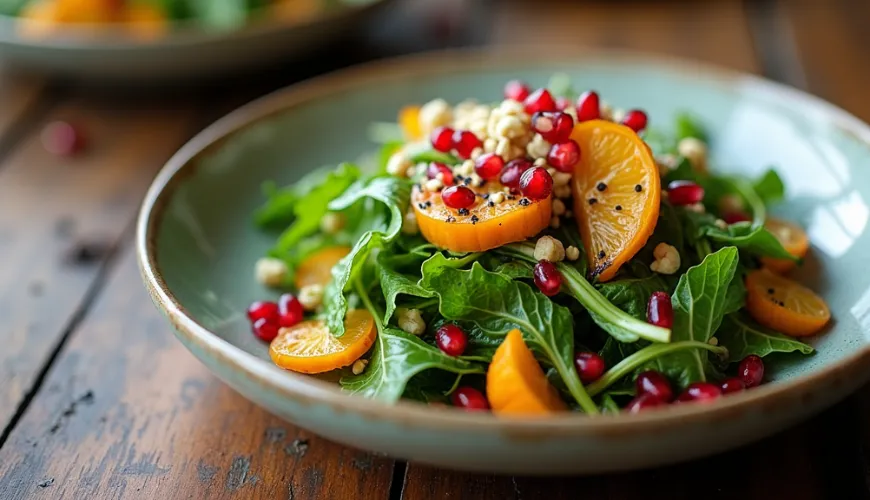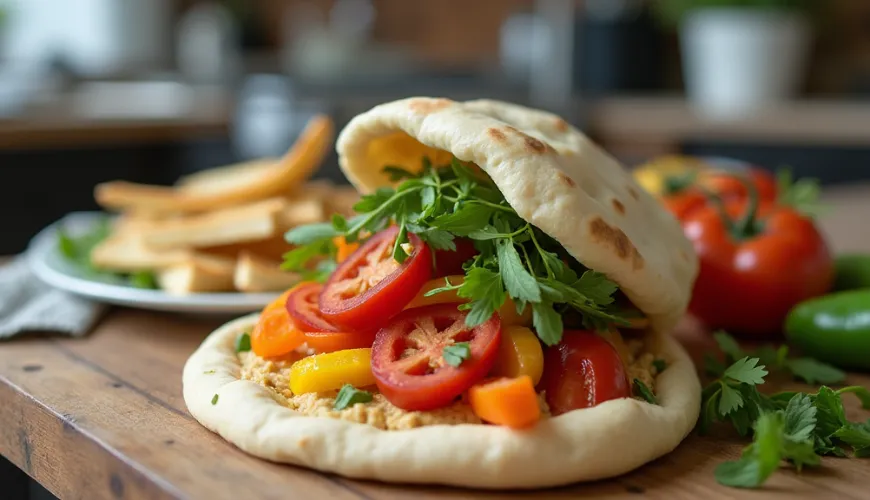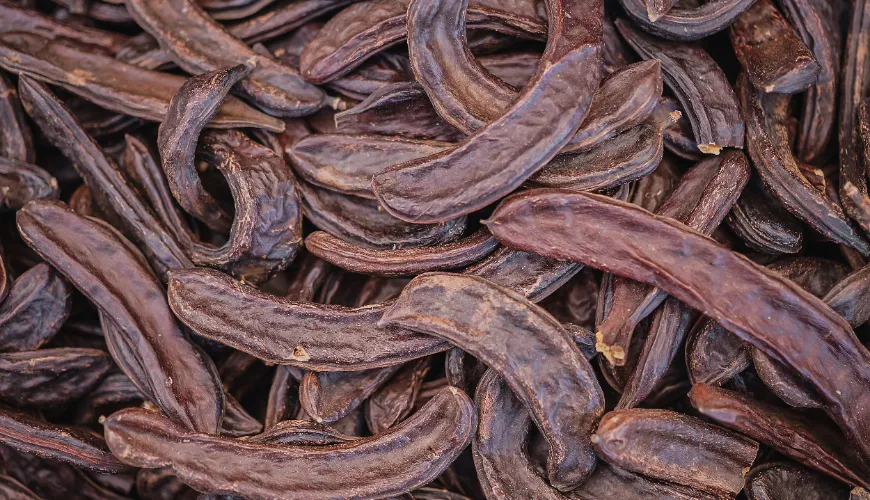
Basic Recipe for Pita Bread That Anyone Can Handle

Pita Bread - A Fragrant Gateway to the Mediterranean World
When you hear "pita," most people probably imagine a sunlit market somewhere in Greece or Turkey, where the air is filled with the aroma of garlic, olive oil, and baked dough. Pita bread is not only an indispensable part of many Mediterranean cuisines but also one of those dishes we can easily prepare at home, making us feel as if we've been transported to the Aegean Sea for a moment. It's a simple yet extraordinarily versatile bread – perfect for home baking enthusiasts and those looking for a quick and healthy way to enhance their daily diet.
You might be surprised to learn that unlike other types of bread, pita doesn't have to be baked exclusively in an oven. There is a recipe for pita bread on a pan, which you can manage without a baking stone or convection oven. The result? A fluffy, soft flatbread that's easy to fill and never disappoints.
Origin and Charm of Simplicity
Pita is an ancient type of bread, with roots in the Middle East and Eastern Mediterranean. Its charm lies in its simplicity. The basic dough consists only of flour, water, yeast, salt, and a drop of olive oil. What sets it apart from other flatbreads is its preparation method: during baking, it creates an internal "pocket," formed by the rapid rise in temperature and steam in the dough.
This pocket is like a canvas for culinary creativity – you can fill it entirely to your taste, and this is where the beloved pita bread filling comes into play. Whether you're craving fresh vegetables with hummus, spiced falafels, grilled meat, or perhaps vegan tofu with tahini, pita never limits you. It's like a homemade sandwich with a Mediterranean flair.
But let's first take a look at the recipe itself and how to prepare pita bread at home, even if you don't have an oven.
Recipe for Pita Bread on a Pan
Pita can be prepared dry on a pan just as well as in an oven. This method is ideal for anyone looking to save time while still enjoying authentic homemade bread.
You will need:
- 500 g of all-purpose flour (you can mix it with whole grain for a healthier variant)
- 1 packet of dried yeast (7 g) or 20 g of fresh yeast
- 1 tablespoon of olive oil
- 1 teaspoon of salt
- 300 ml of lukewarm water
Instructions:
- In a bowl, mix a little water with yeast and let it activate for 10 minutes.
- Add flour, salt, the rest of the water, and oil. Work into a smooth dough – it should be elastic and slightly sticky.
- Let the dough rise for about an hour under a cloth until it doubles in size.
- Once risen, divide the dough into 8 equal parts. Roll each piece into a flat round about 0.5 cm thick.
- Heat a dry pan (ideally cast iron or heavier Teflon) and bake the pita on each side for about 1–2 minutes. It should puff up and form golden blisters.
- Allow the finished pitas to cool briefly under a cloth to keep them soft.
This version of pita bread is not only quick but also extremely adaptable. If you have time, you can let the dough rise overnight in the fridge, which will give it a deeper flavor.
Pita Bread Filling
Once you have the pita rounds ready, comes the best part – inventing the filling. Pita is not just a wrapping; it's a full-fledged part of the dish that pairs perfectly with the flavors you place inside. You can customize it according to seasonal ingredients, dietary requirements, or simply based on what's in your fridge.
Here is a simple yet excellent recipe that the whole family will love.
Popular Vegetarian Pita Filling:
- Hummus (ideally homemade, flavored with lemon and cumin)
- Pickled red cabbage with apple cider vinegar
- Slices of cucumber and tomato
- Grilled halloumi with a drop of olive oil
- Fresh leaves of cilantro or parsley
Or try something with an oriental twist – for example, pita filled with roasted pumpkin, chickpeas, tahini, and cumin, lightly drizzled with lemon juice. If you prefer meat versions, classic gyros with yogurt dip or spiced tandoori chicken are welcome choices.
One of the greatest advantages of pita is that it can be prepared in advance and stored in the fridge or freezer. Then just heat it slightly and fill with whatever you like. It's an ideal lunch for work, a light dinner, or convenient food on the go.
Pita as a Family Ritual
In northern Italy, there lives a family that prepares homemade pitas every Sunday according to their own recipe brought back from a holiday in Lebanon. "Preparing the dough and the aroma of fresh rounds puffing up on the pan is a ritual for us," says Marco, the head of the family. "The kids help roll out the dough, and everyone then puts into the pita what they like. It's fun and a way to be together."
Such an experience shows that pita bread can be more than just food – it can be an opportunity to slow down for a moment and connect.
Pita Bread in Modern Cuisine
While traditional recipes never age, pita fits perfectly into modern cuisine seeking alternatives to classic bread. People avoiding gluten can bake a gluten-free version from rice or buckwheat flour. Vegans can fill it with tempeh, fermented vegetables, and avocado. Fitness enthusiasts can prepare a high-protein pita, for instance, with cottage cheese, spinach, and roasted seeds.
Moreover, pita can replace tortilla, wrap, or even a burger bun. It's also an excellent complement to soups – instead of a baguette, you can lightly toast it and serve with lentil soup or vegetable cream.
According to Healthline, pita is rich in complex carbohydrates, contains fiber, and when prepared properly is also low in fat. Therefore, it fits into a balanced diet, and its glycemic index is lower than many other types of bread.
A Little Piece of the Mediterranean Right on Your Plate
Pita bread is more than just a dish – it's a small journey into history, into other cultures, and flavors. In a time when more and more people are interested in the origin of food, homemade production, and healthier eating, pita has its irreplaceable place. It's not complicated to prepare, naturally vegan, versatile, and appeals to almost everyone.
Whether you opt for its classic form or fill it according to your imagination, pita allows you to create food that is not only delicious but also meaningful. And perhaps that's where its charm lies – in simplicity that gives room for creativity, sharing, and the joy of food.

